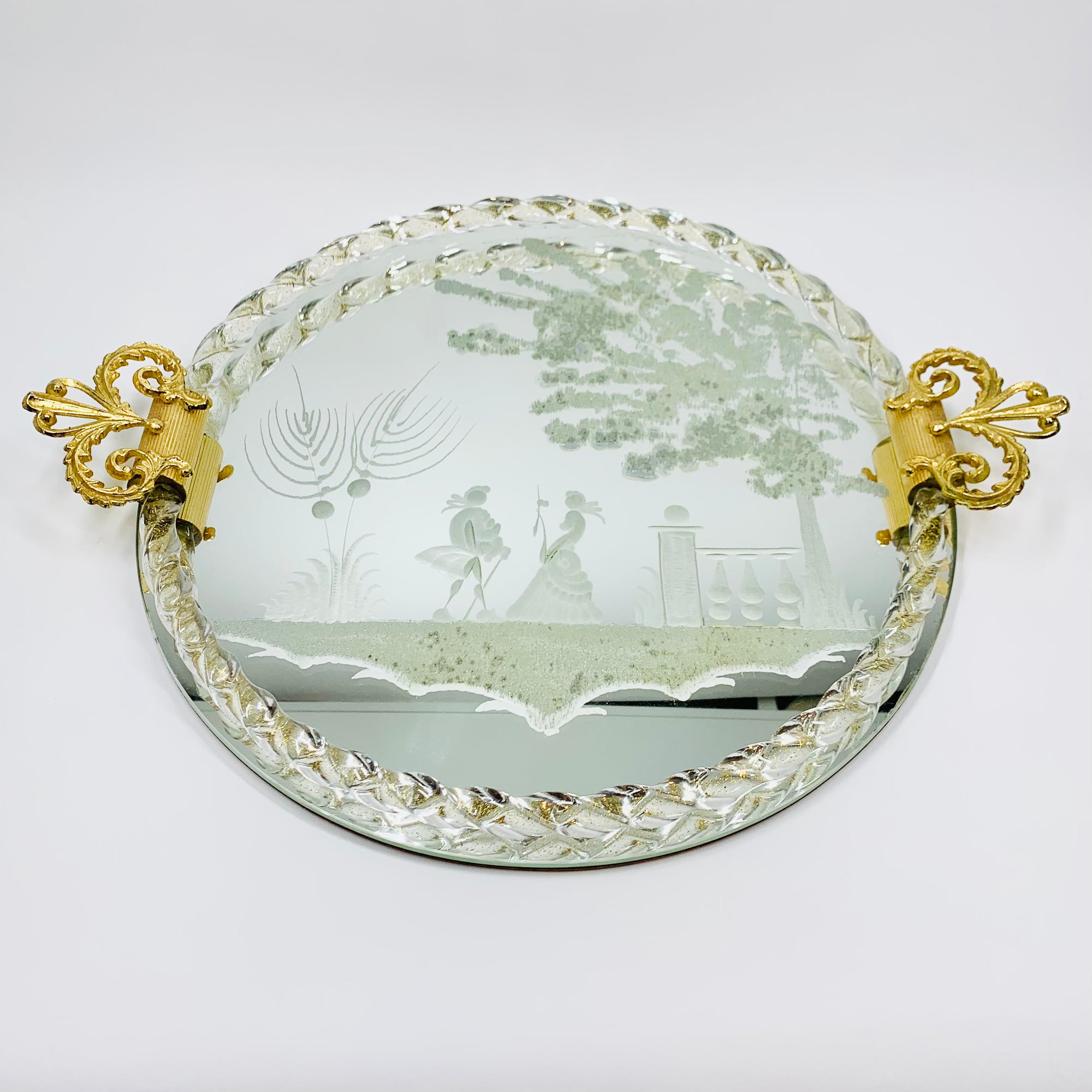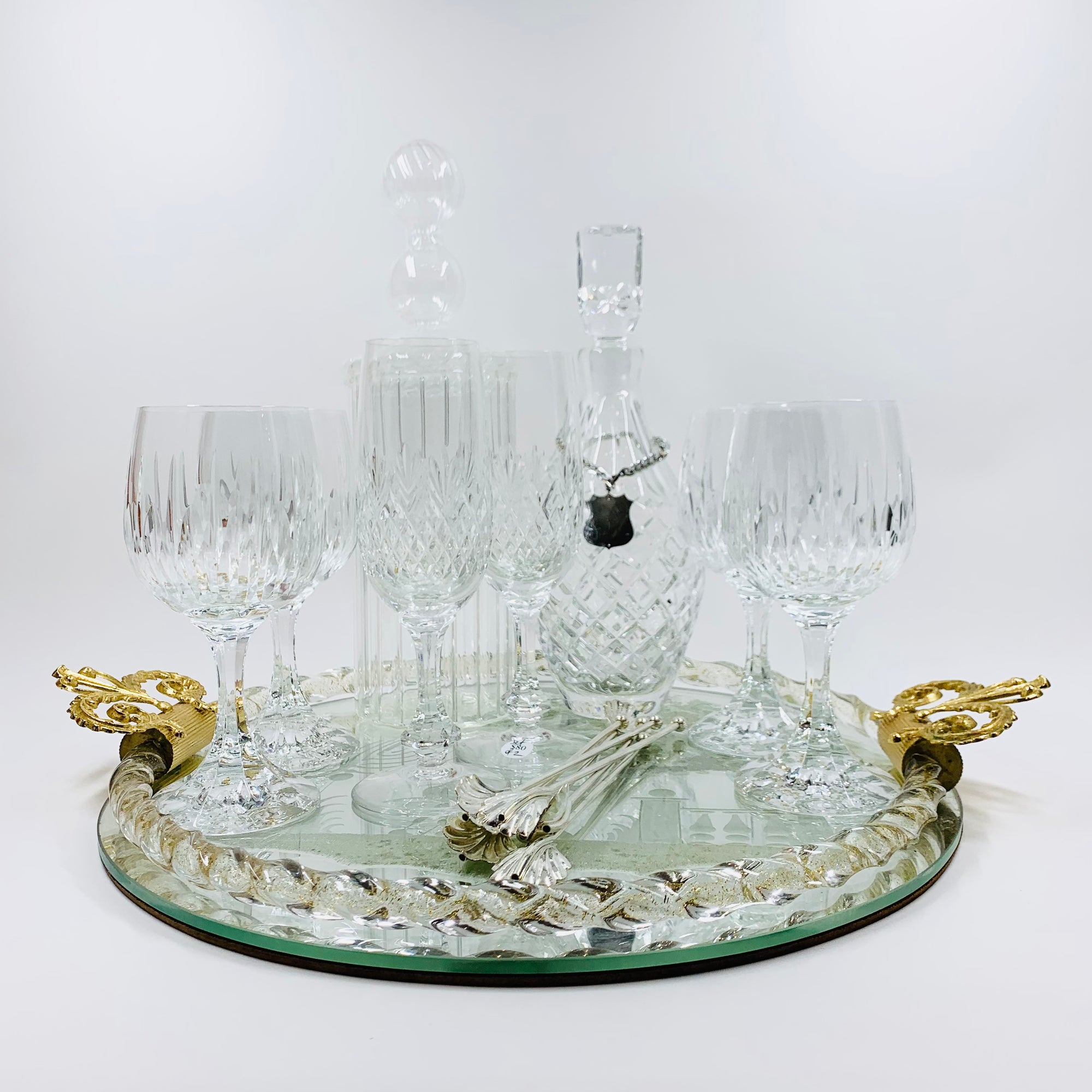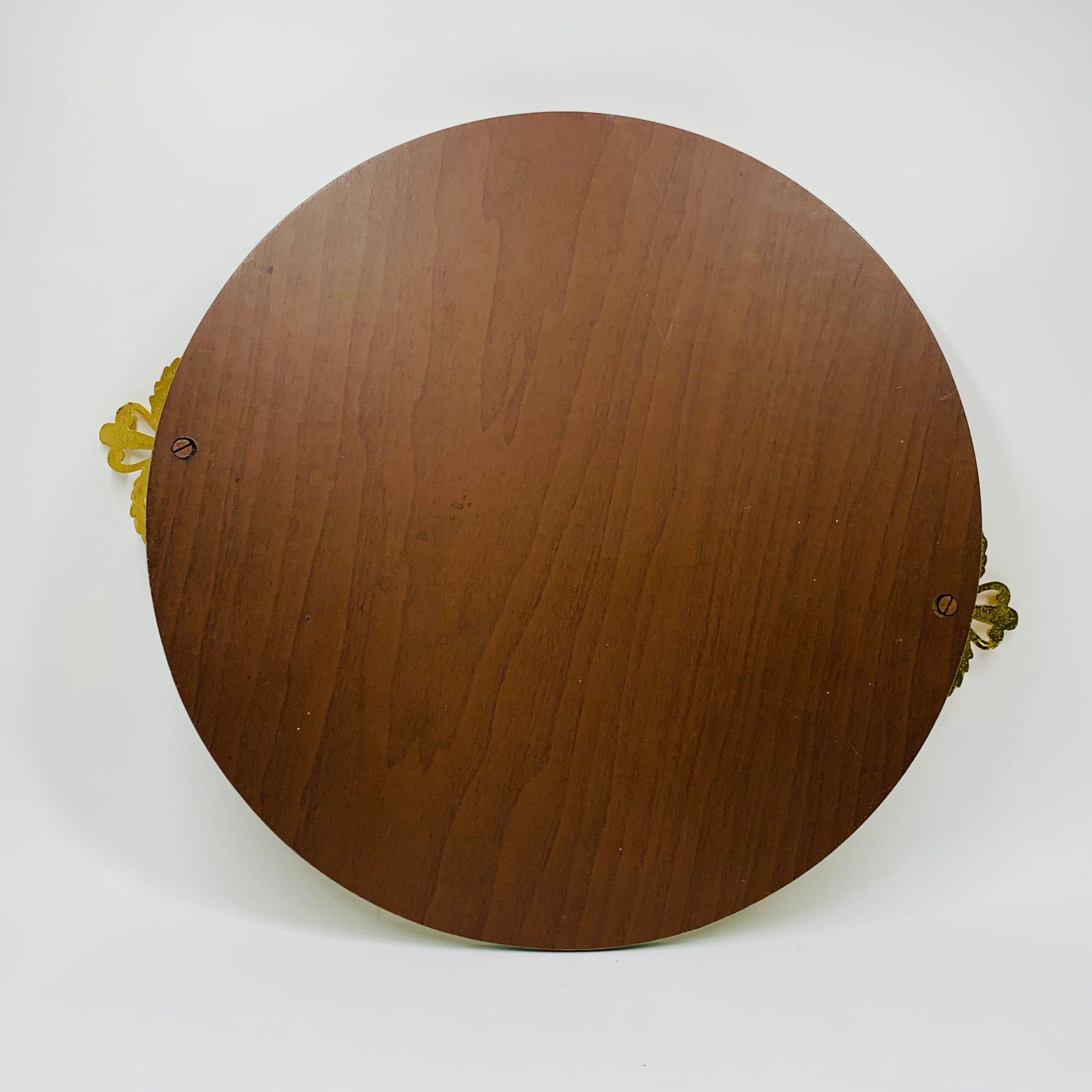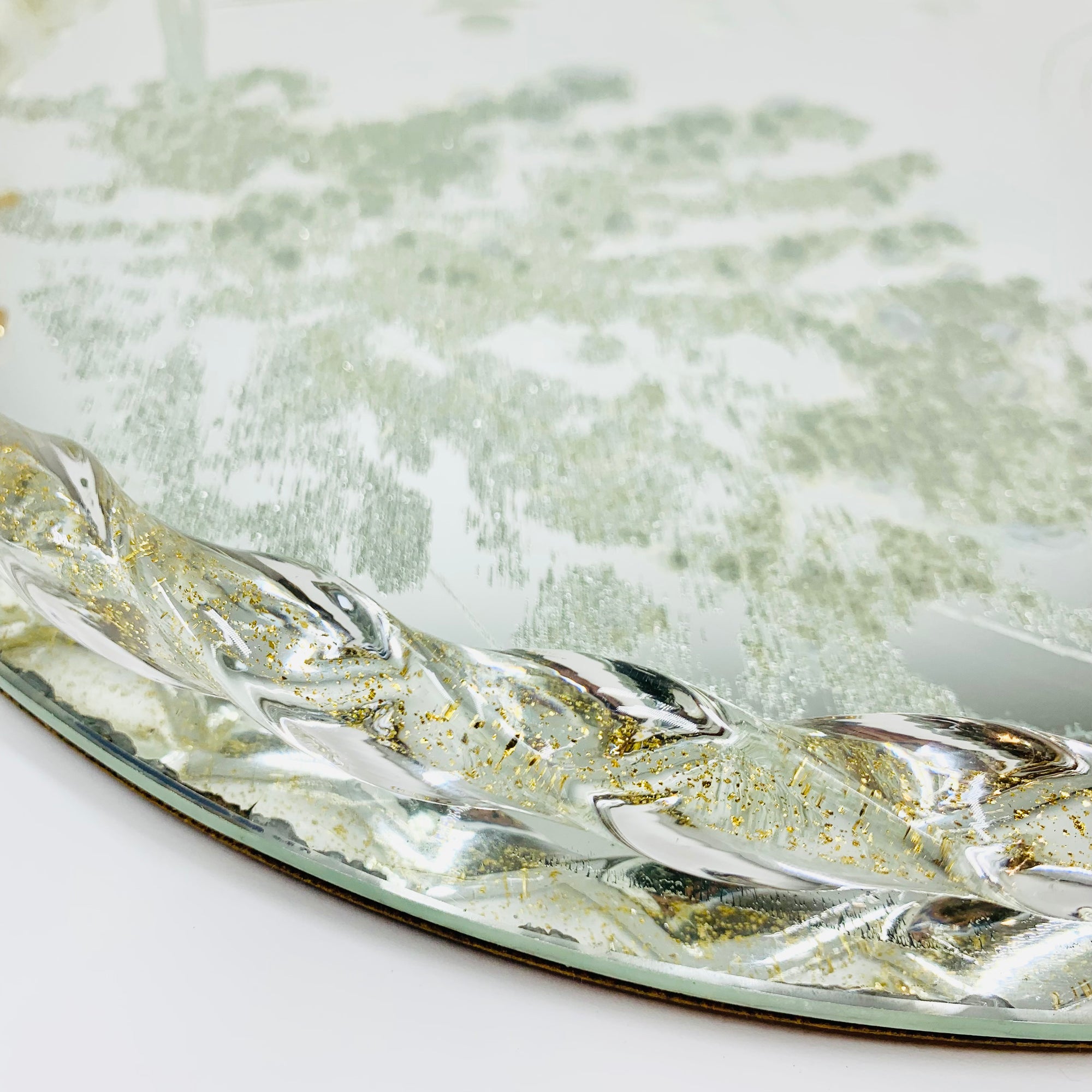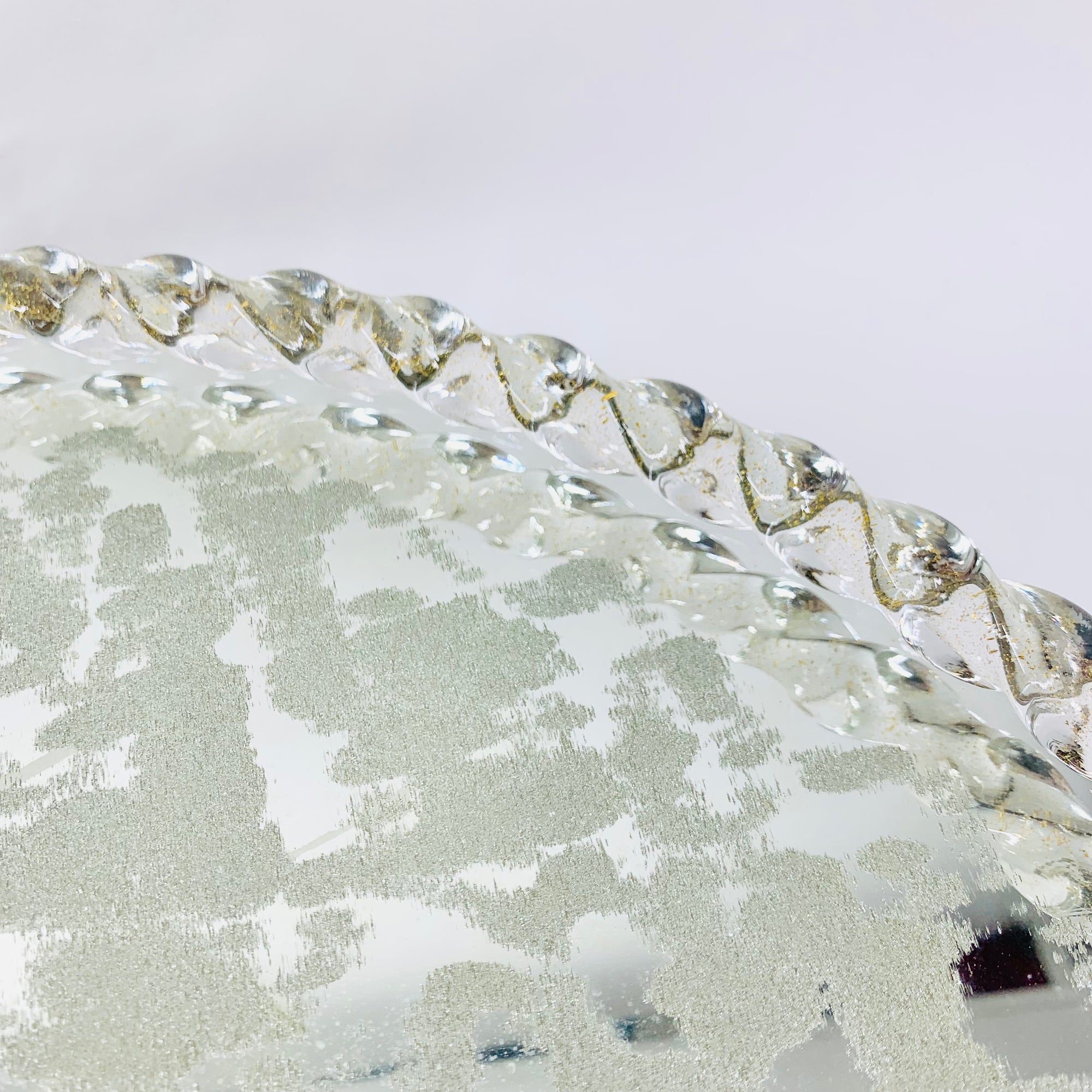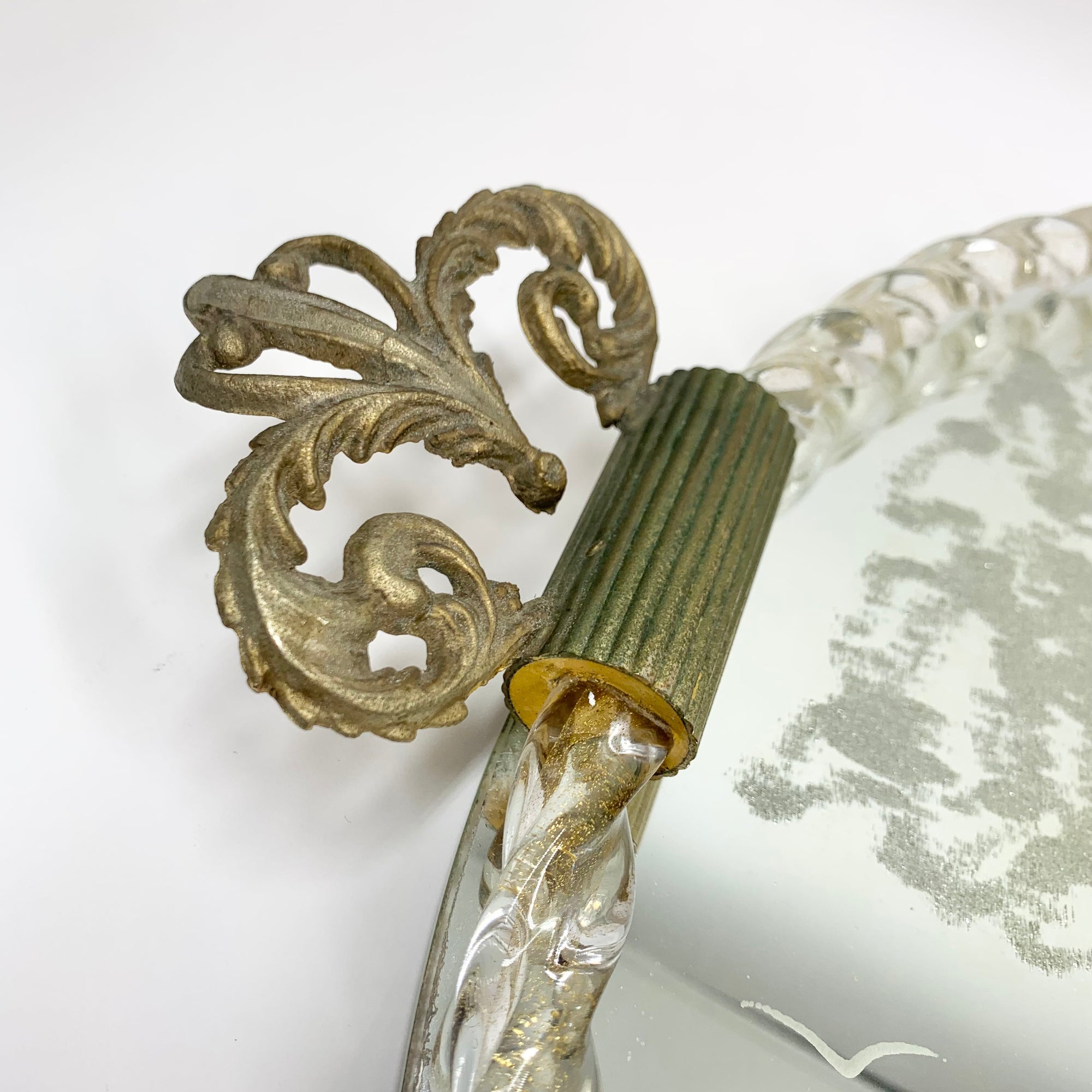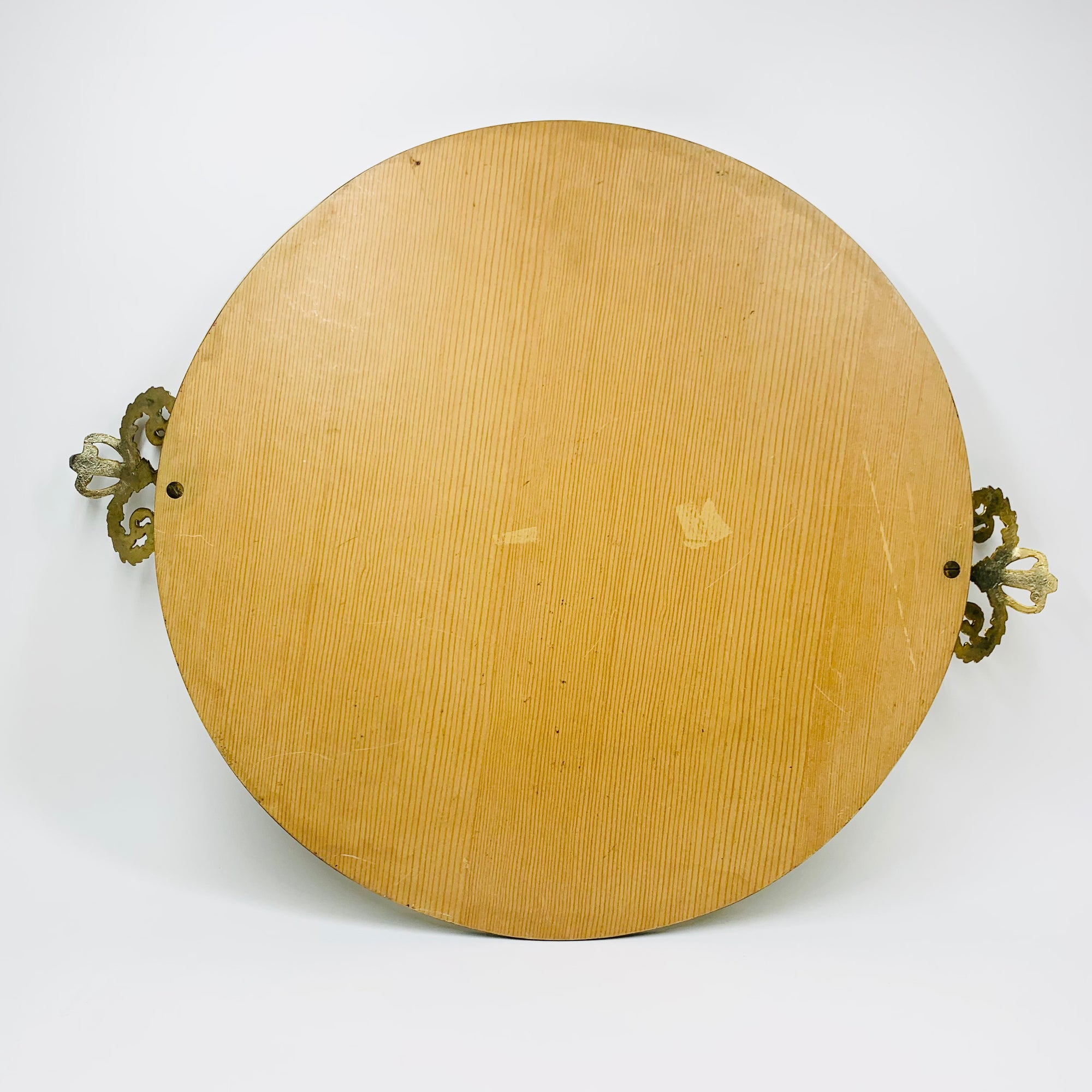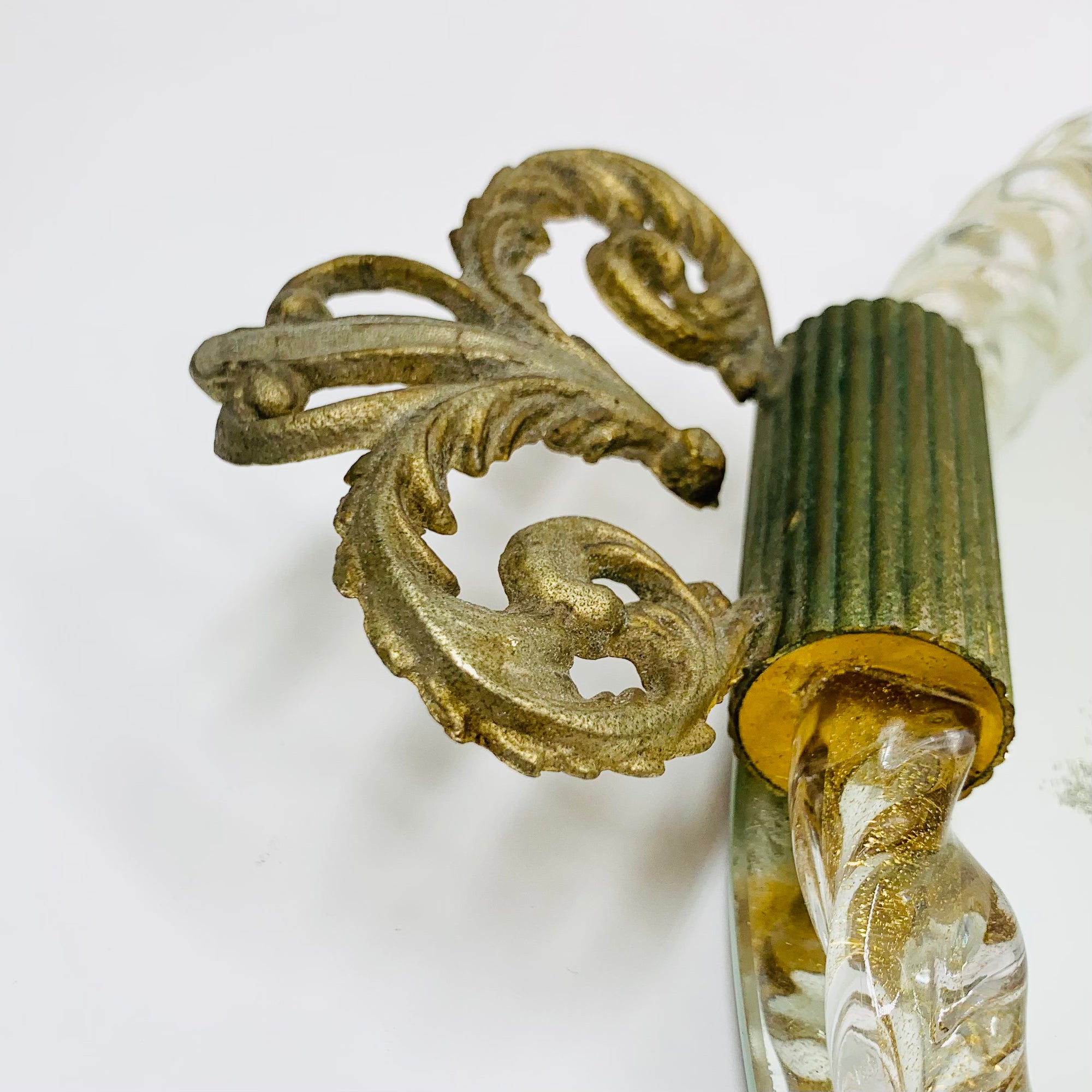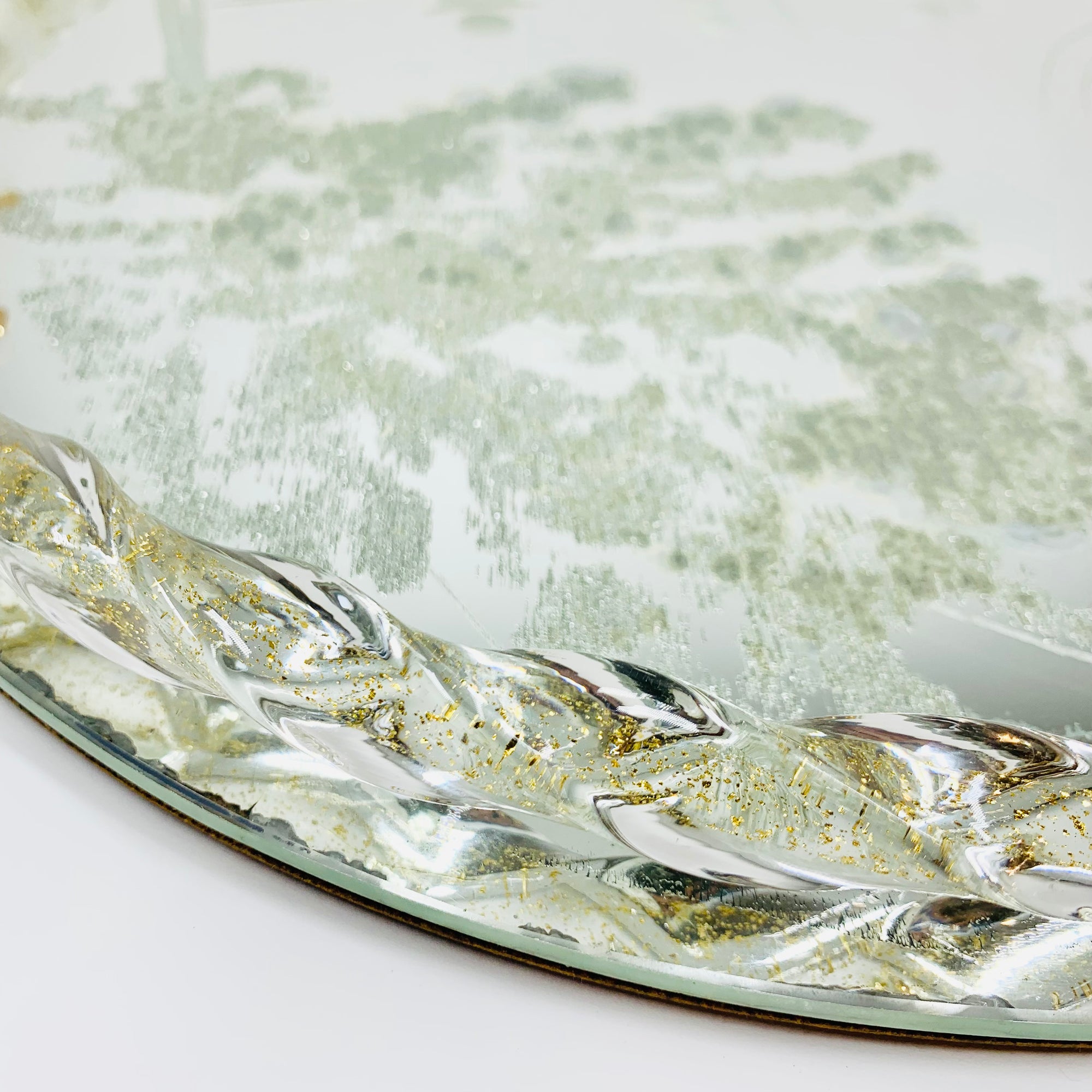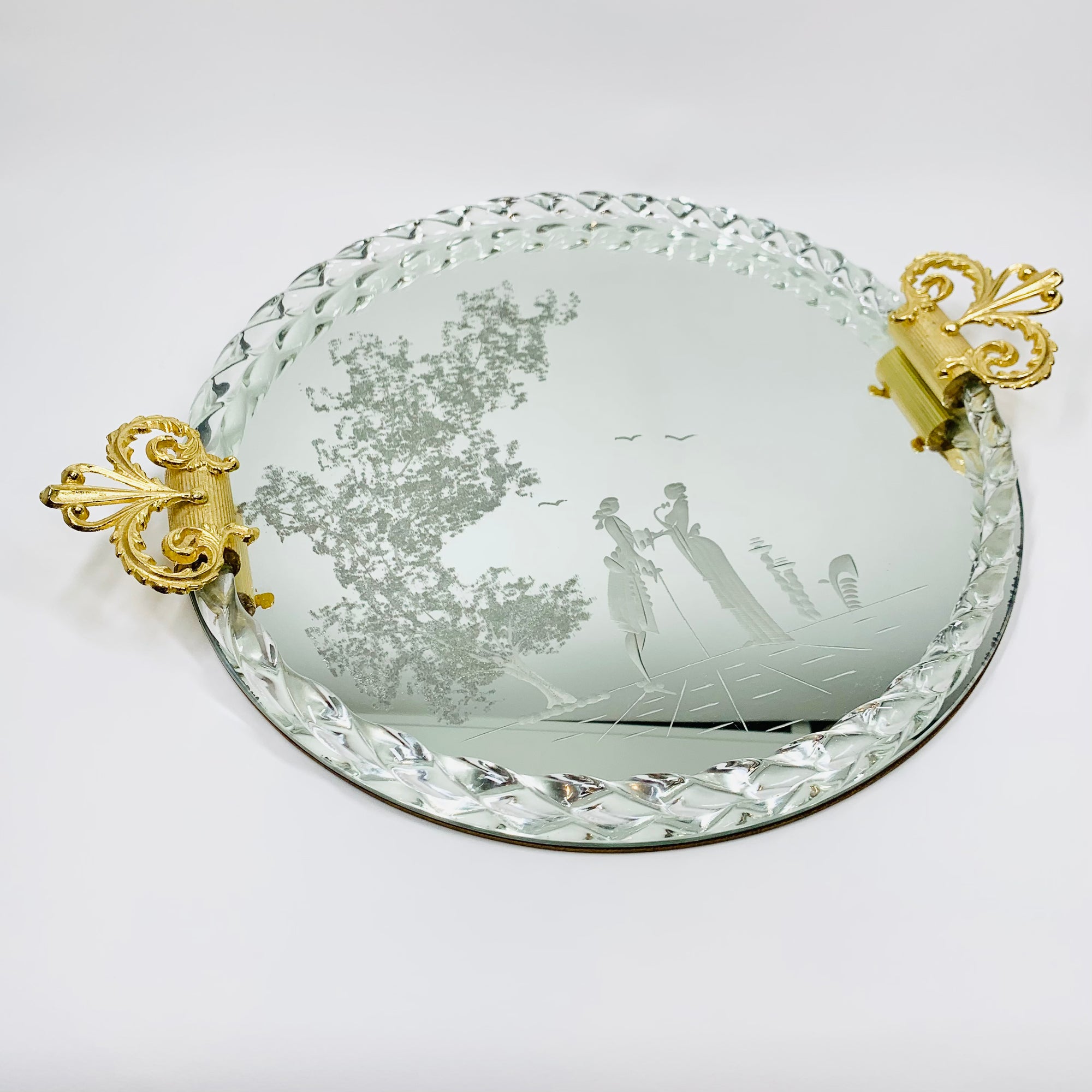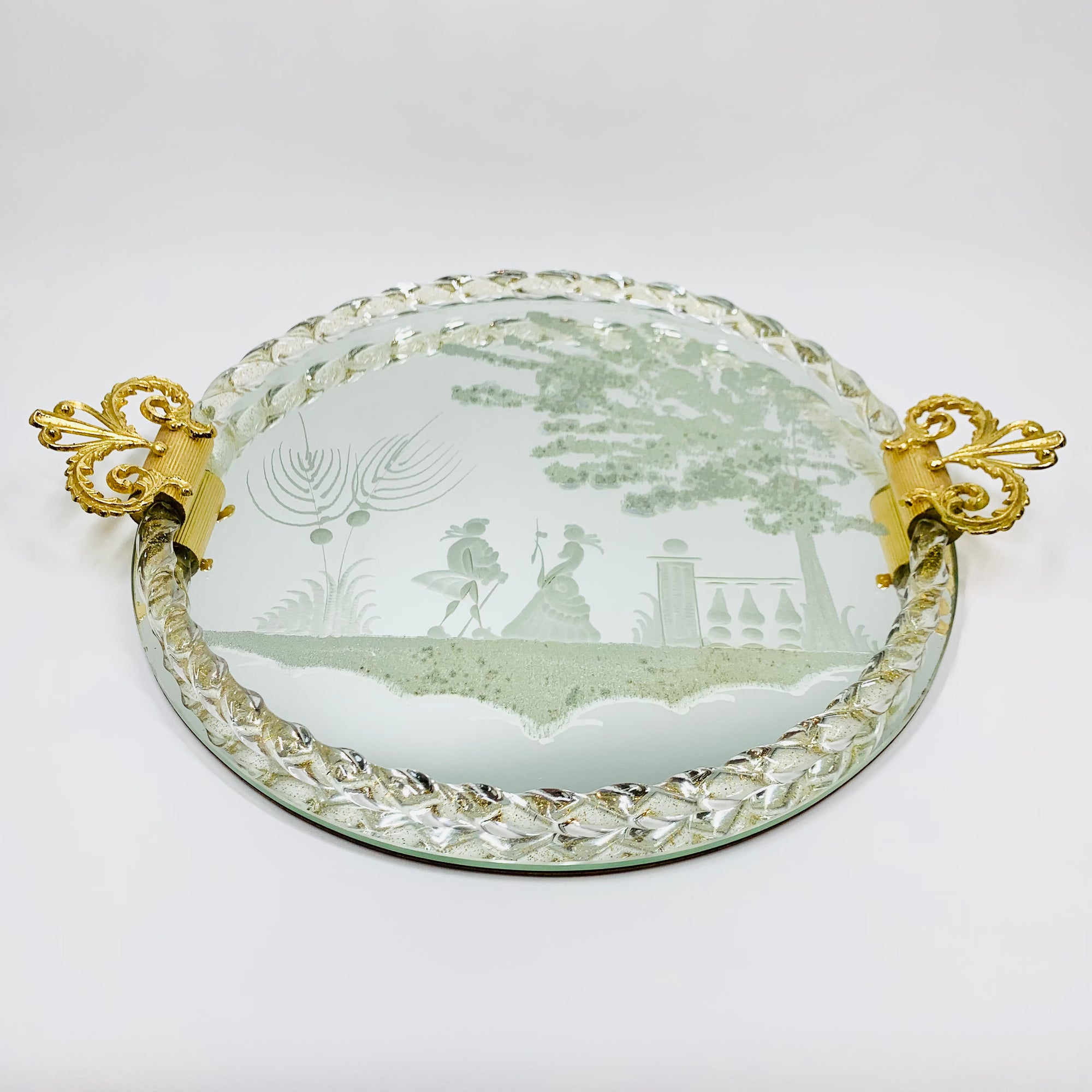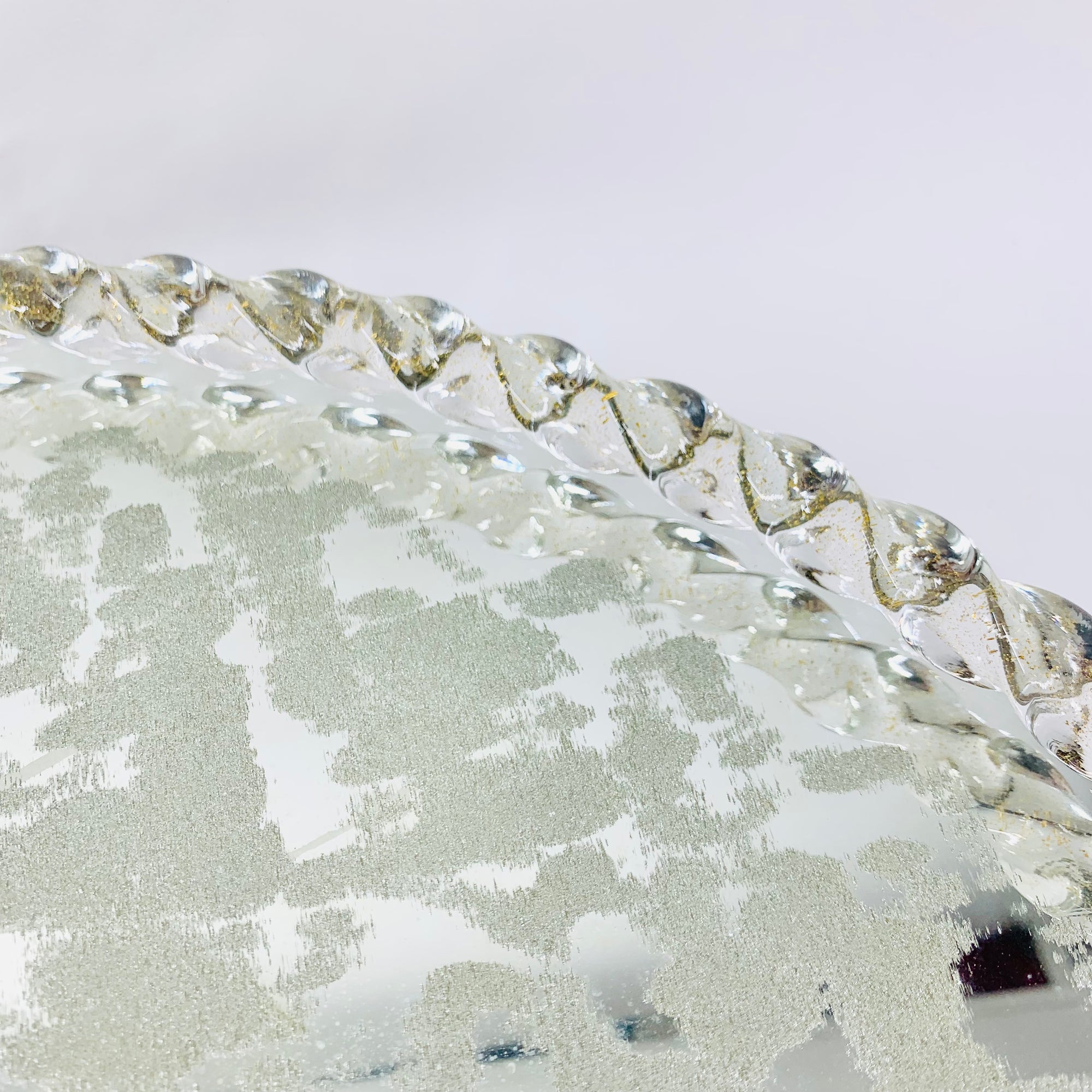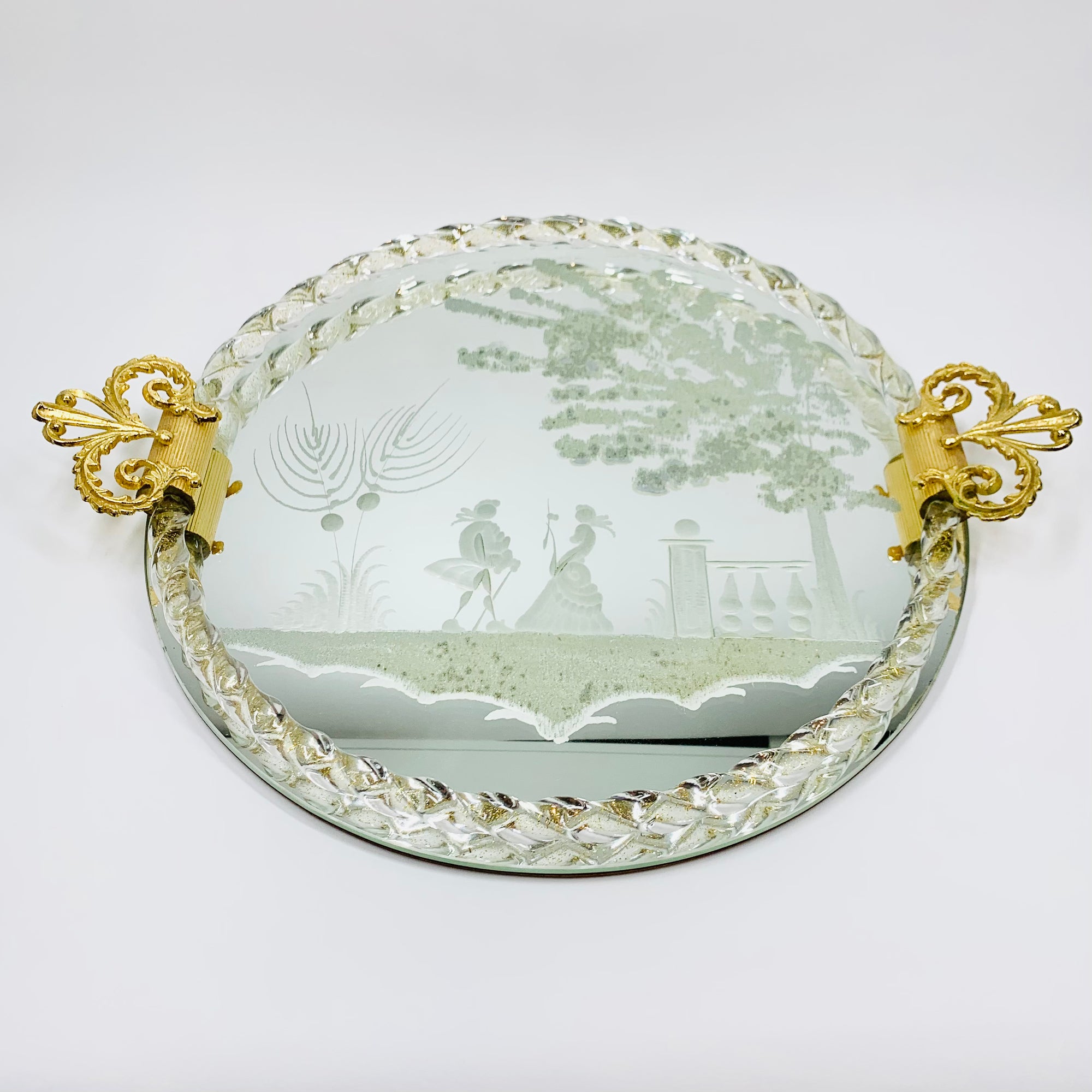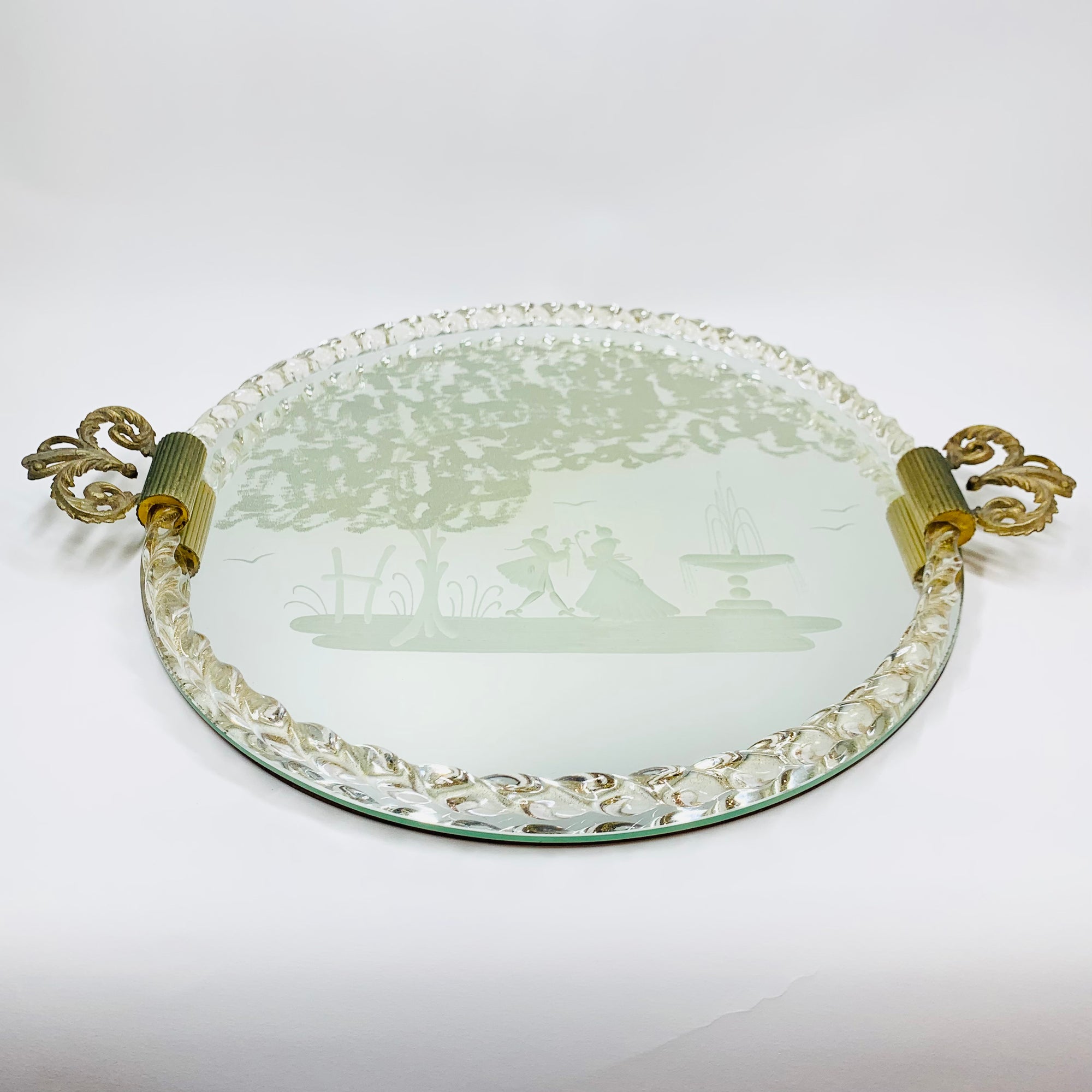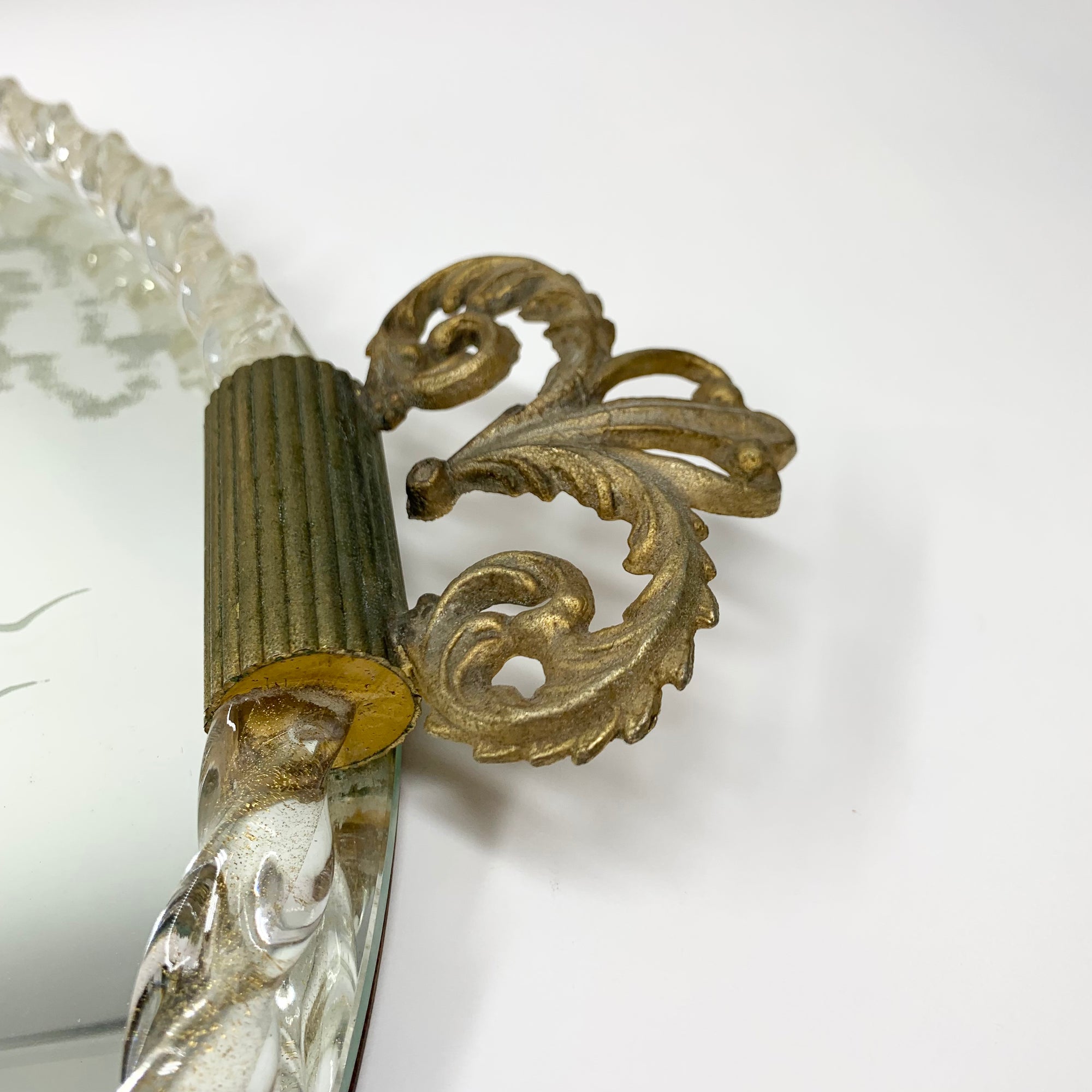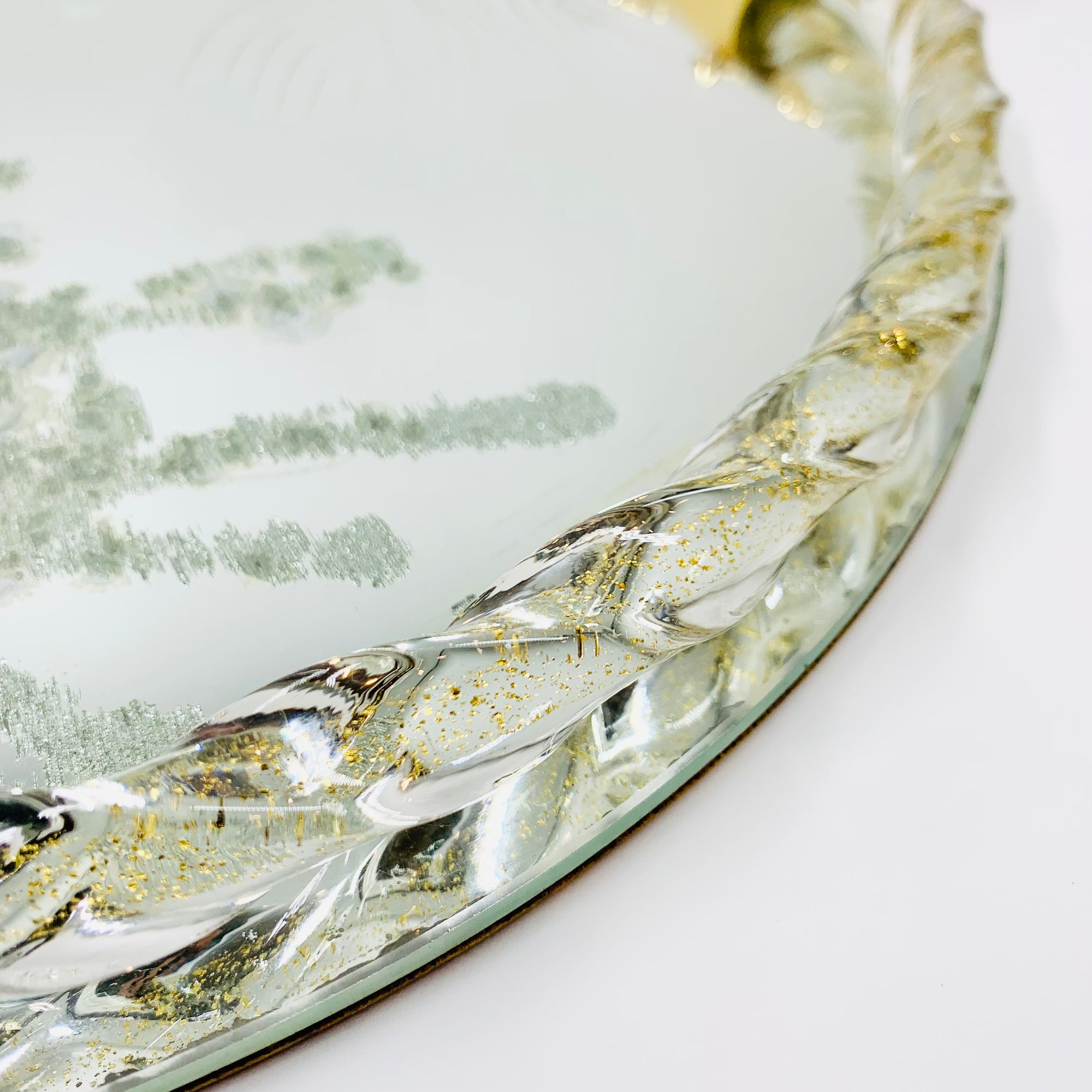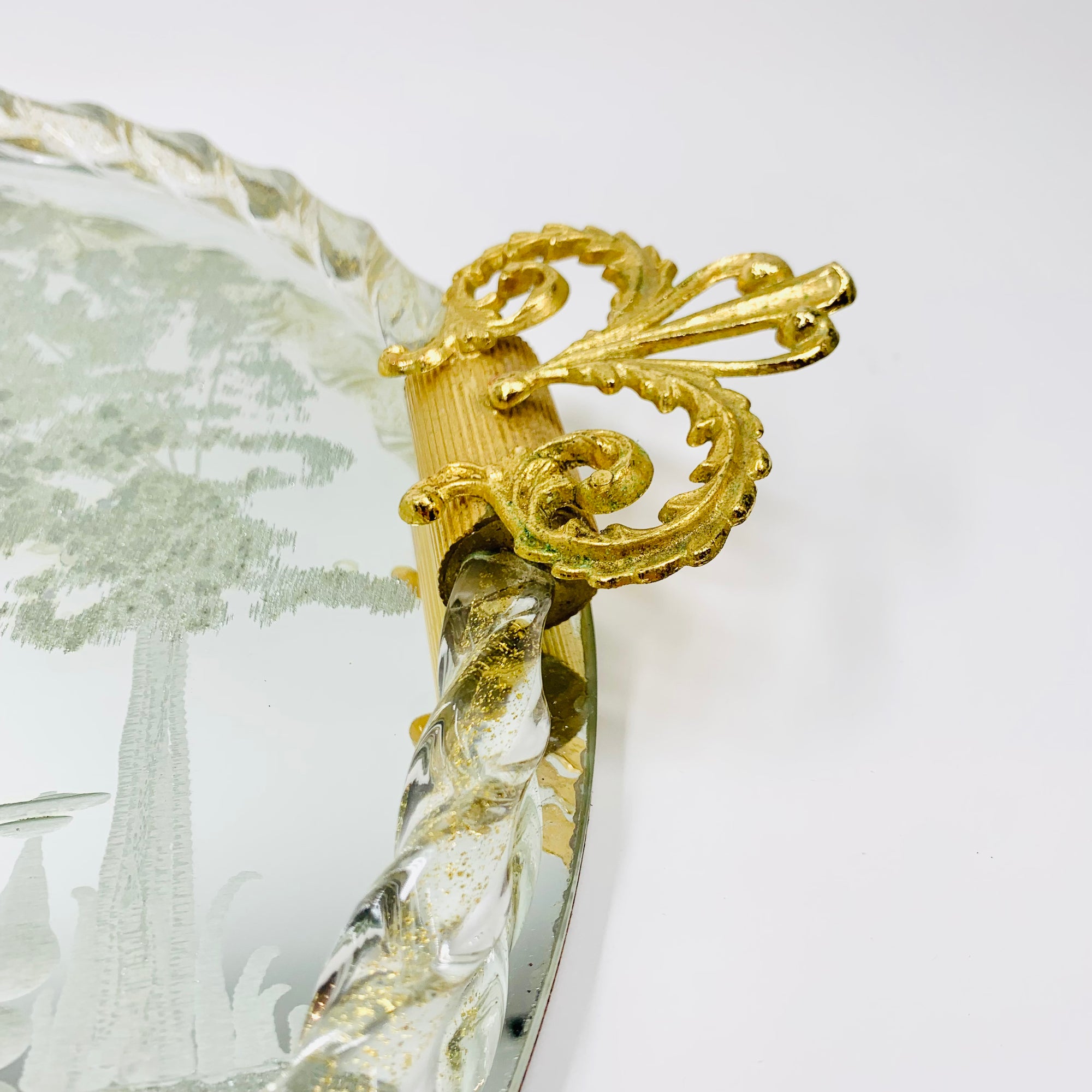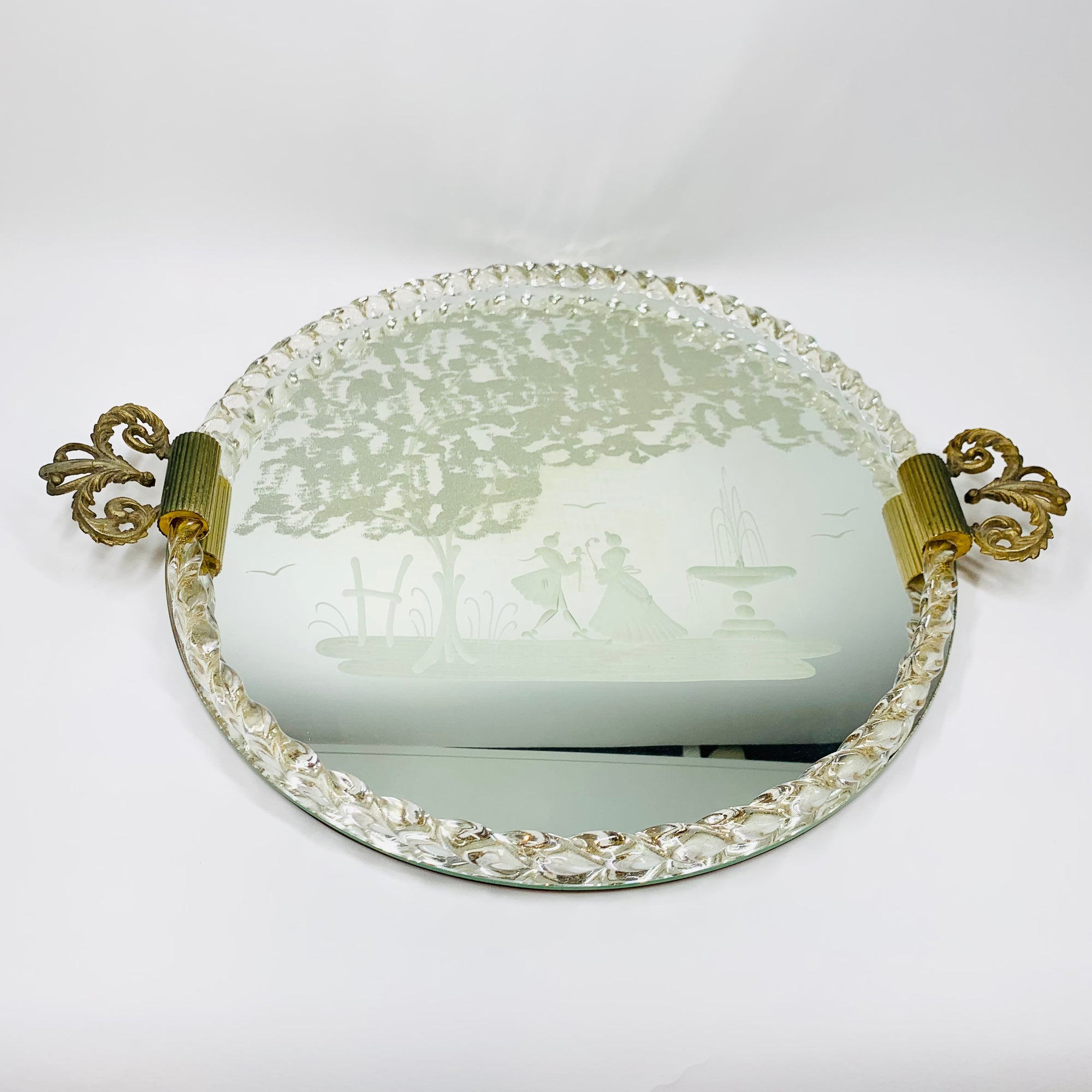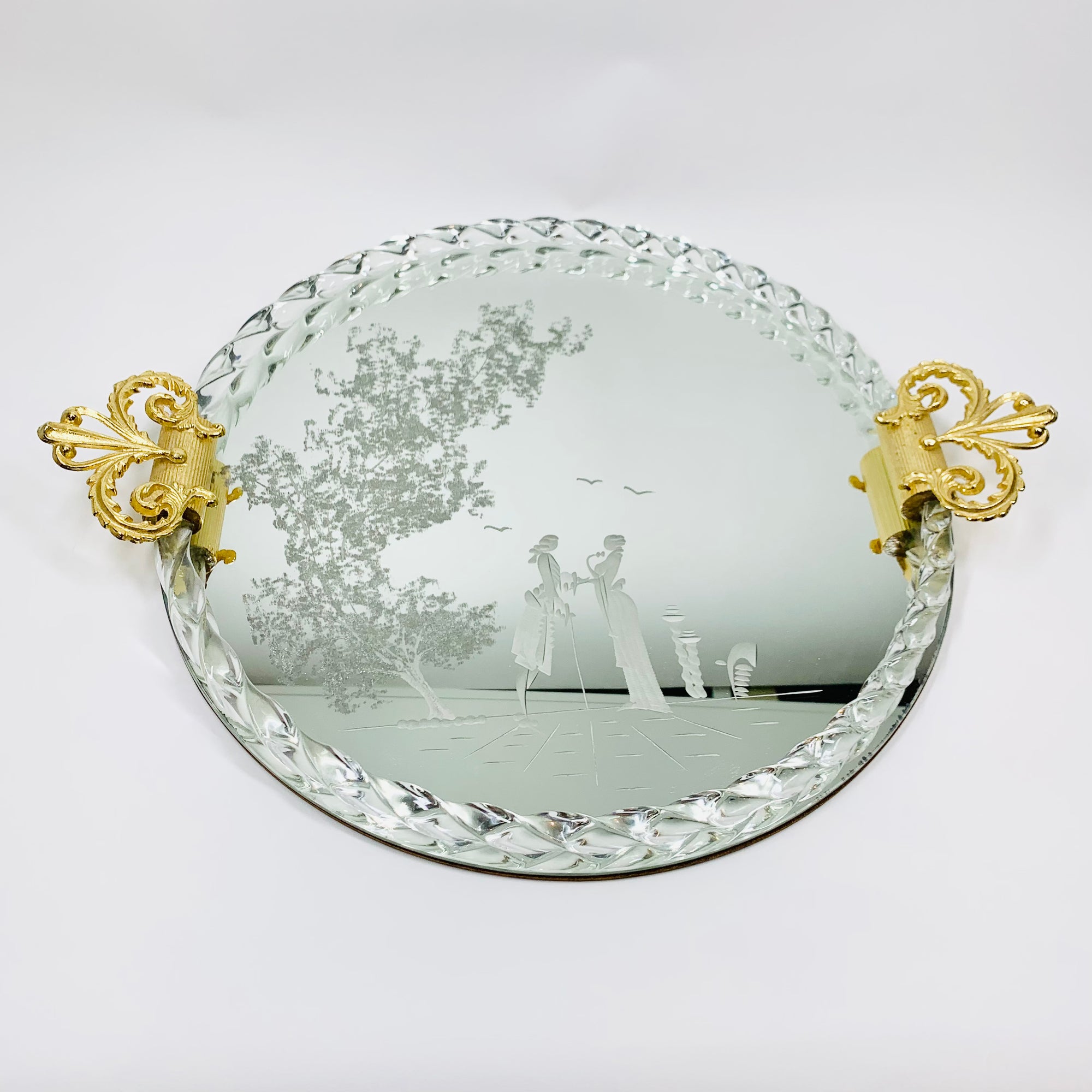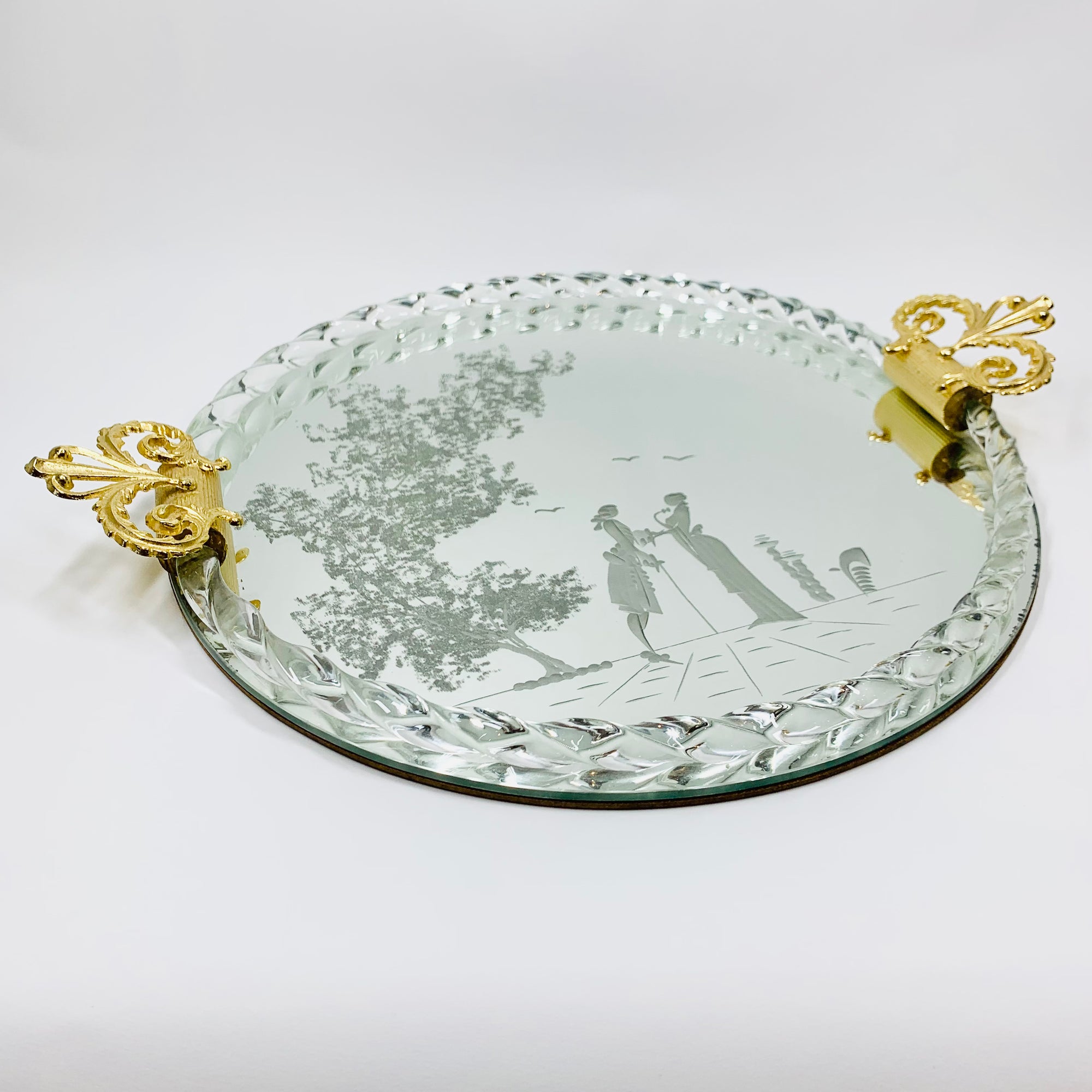
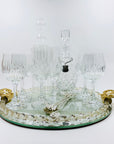
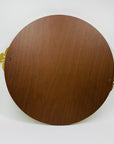
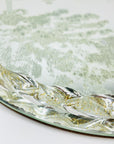
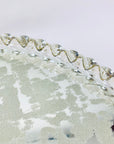
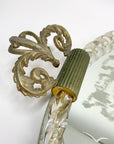
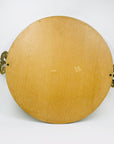
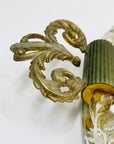
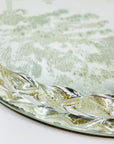
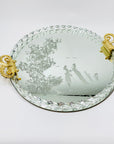
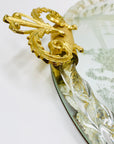
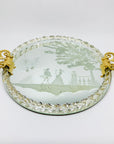
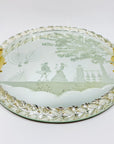

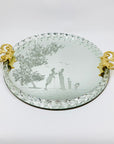
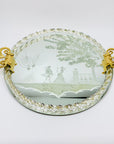
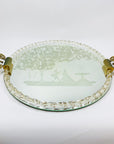
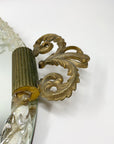

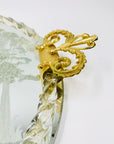
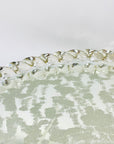
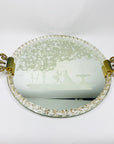

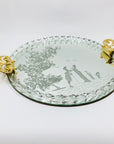
1940s hand etched mirror tray with gold aventurine rope border
Beautiful and rare 1940s Ercole Barovier Murano hand etched mirror serving tray.
Each is made with solid brass handles, glass twist rope border, hand etched and reinforced with solid wood backing, sone wear on the mirror near the handles consistent with use and age, no cracks in good condition overall.
Price per unit, please select size and style before check out. We only have 3 different ones in our collection so this is a rare offering 25% below market value.
Size:
Medium with gold aventurine glass rope border: 36cm diameter x 3cm
Medium with clear glass rope border: 35cm diameter x 3cm
Large with gold aventurine glass rope border: 40cm diameter x 3cm
Ercole Barovier is now considered one of the most charismatic figures in the history of Murano glass and one of the leading lights in the revival of the island's glass industry in the first few decades of the twentieth century. His enormous contribution to traditional Murano glass, in terms of knowledge, style and new techniques, is still felt today in the continuing development of glassmaking on the island.
Born in 1889 to a Muranese family that could trace its origins back to the 13th century, Barovier did not train as a glassblower but had a great passion for glass and quickly distinguished himself as an innovative designer. He joined Artisti Barovier in 1919 at the age of thirty and found success designing vases in the mosaic technique. In 1930 he produced the critically acclaimed and award-winning Primavera series, the success of which encouraged him to continue his experiments.
Throughout the 1930s and 1940s Barovier’s dedication to the technical mastery of experimental glass brought him international fame. His thick-walled vessels decorated with un-melted pigments, highly textured surfaces, raw metallic inclusions and expressive hot-work applications helped to create a new aesthetic vocabulary for Murano glass in the first half of the 20th century.
We partially subsidise your shipping costs, we charge $10.00 flat rate per order for all domestic purchases Australia-wide. International shipping will be calculated automatically by our shipping partner at checkout, if you need to bulk ship int'l please email info@glassetc.shop for more details. We will carefully package the item/s to ensure shipping quality with insurance coverage for the full price you paid for the item. In the event that the item arrives damaged or broken, you must email us 1 photo of the shipping label on the package, 1 photo of the packaging inside and 1 photo of the broken item, upon our receipt of the photos that are evidence of loss/breakage, we will issue a full refund to the orignal method of purchase. Please contact our store if you need further information about shipping.

